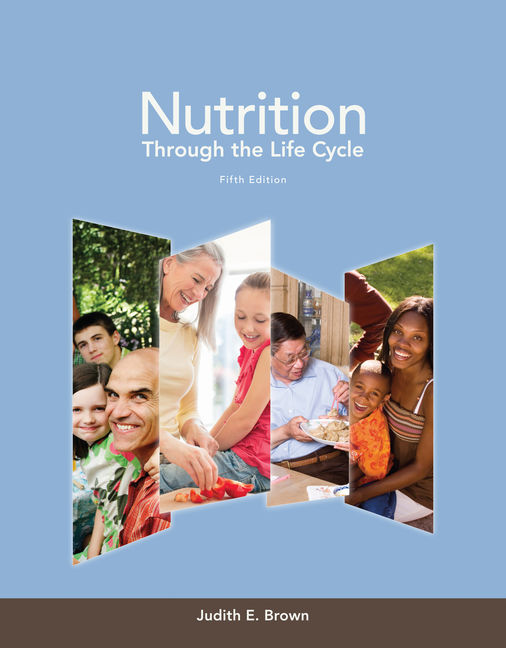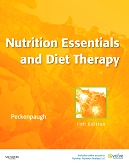Test Bank For Nutrition Through the Life Cycle 5th Edition by Judith E. Brown
Original price was: $75.00.$35.00Current price is: $35.00.
Test Bank For Nutrition Through The Life Cycle 5th Edition By Judith E. Brown covers a wide range of topics related to nutrition and its impact on human health throughout the various stages of life. The book provides readers with a solid foundation in the principles of nutrition and offers practical guidance on how to make healthy choices that will promote wellness throughout the lifespan.
Brown draws on her extensive experience as a registered dietitian and certified diabetes educator to provide readers with the latest scientific information on the connection between diet and chronic disease. She also takes a comprehensive approach to discuss special dietary needs during pregnancy, infancy, childhood, adolescence, adulthood, and the later years of life. Test Bank For Nutrition Through The Life Cycle 5th Edition By Judith E. Brown is an essential resource for anyone interested in improving their health and wellbeing through optimal nutrition.
Digital item No Waiting Time Instant Download
ISBN-10: 1133600492, ISBN-13: 9781133600497
Description
Test Bank For Nutrition Through the Life Cycle 5th Edition by Judith E. Brown
Test Bank for Chapter 2 – Preconception Nutrition
Key to question information: ANS = correct answer; DIF = question difficulty; REF = page reference; OBJ = chapter learning objective for question section
Learning Objectives
2.1 Cite three examples of the Healthy People 2020 nutrition-related objectives for the preconception period.
2.2 Identify six major hormones involved in the regulation of male and female fertility processes, and identify their source and effects on the regulation of fertility processes.
2.3 Describe the potential effects of nutrition-related factors such as body fat content, iron status, and alcohol intake on fertility in females and males.
2.4 Cite four examples of relationships between nutrient intake and nutritional status during the periconceptional period and the outcome of pregnancy.
2.5 Develop a one-day menu for a preconception woman and a man based on the ChooseMyPlate.gov food guidance materials.
2.6 Identify three nutrition-related consequences that may be related to the use of combination hormonal contraceptives and a consequence that is related to the use of estrogen or progestin contraceptives only.
2.7 Cite three important nutrition-related components of preconception health care.
2.8 Describe the four steps of the Nutrition Care Process.
Multiple Choice
1. Fertility refers to _____.
a. the biological ability to bear children after intercourse
b. the absence of production of children
c. the actual production of children
d. the number of births per 1000 miscarriages
ANS: c DIF: Fact-based, easy REF: 51 OBJ: 2.1
2. Couples having regular, unprotected intercourse have a _____ chance of a diagnosed pregnancy within a given menstrual cycle.
a. 15-20%
b. 20-25%
c. 25-30%
d. 30-50%
e. 50-75%
ANS: b DIF: Fact-based, easy REF: 51 OBJ: 2.1
3. The _____ of the menstrual cycle occurs after ovulation.
a. follicular phase
b. luteal phase
c. estrogen phase
d. primordial phase
e. None of the above
ANS: b DIF: Fact-based, easy REF: 54 OBJ: 2.2
4. What is the rate of miscarriages in the first 20 weeks of pregnancy?
a. 6%
b. 7%
c. 8%
d. 9%
ANS: d DIF: Fact-based, medium REF: 51 OBJ: 2.1
5. The most common cause of miscarriage for women is:
a. structural abnormalities in the uterus.
b. the presence of a severe defect in the fetus.
c. maternal infection.
d. endocrine disorders.
e. unknown random events.
ANS: b DIF: Fact-based REF: 51 OBJ: 2.1
6. The first half of the menstrual cycle is called the _____.
a. follicular phase
b. luteal phase
c. estrogen phase
d. primordial phase
e. None of the above
ANS: a DIF: Fact-based, medium REF: 52 OBJ: 2.2
7. Ovulation results from a surge in the hormone _____.
a. estrogen
b. progesterone
c. luteinizing hormone
d. follicle-stimulating hormone
e. gonadotropin releasing hormone
ANS: c DIF: Fact-based REF: 52 OBJ: 2.2
8. The two hormones secreted by the pituitary gland during the FOLLICULAR phase of a woman’s cycle are:
a. follicle-stimulating hormone and progesterone.
b. progesterone and estrogen.
c. follicle-stimulating hormone and luteinizing hormone.
d. luteinizing hormone and progesterone.
e. luteinizing hormone and estrogen.
ANS: c DIF: Fact-based REF: 52 OBJ: 2.2
9. What hormone triggers the production of testosterone by the testes?
a. Follicle-stimulating hormone
b. Luteinizing hormone
c. Progesterone
d. Estrogen
e. a and b
f. c and d
ANS: e DIF: Fact-based, hard REF: 55 OBJ: 2.2
10. Endometriosis is defined as:
a. scarring and blockage of the fallopian tubes.
b. the condition in which endometrial tissue becomes embedded within other body tissues.
c. a modification of pregnancy hormones that results in infertility.
d. an infection of the cervix.
e. the inability to get pregnant.
ANS: b DIF: Fact-based REF: 56 OBJ: 2.2
11. The leading diagnosis related to infertility is _____.
a. endocrine abnormalities that modify hormonal regulation of fertility
b. excessive exercise in women
c. environmental contaminants such as lead and mercury
d. obesity in men
e. “unknown” causes
ANS: a DIF: Fact-based, easy REF: 56 OBJ: 2.2
12. Which of the following factors would NOT be related to infertility in women?
a. A high alcohol intake
b. Excessive exercise
c. A strict vegan diet
d. Having the flu virus and not eating for a day
ANS: d DIF: Application-based, medium REF: 56-57|59 OBJ: 2.3
13. Fat cells produce all of the following hormones that may interfere with reproductive processes EXCEPT
a. estrogen.
b. testosterone.
c. leptin.
d. insulin.
e. Fat cells do not produce any of these hormones.
ANS: d DIF: Fact-based REF: 57 OBJ: 2.3
14. Which of the following nutrition factors would NOT be related to infertility in men?
a. Following a weight-loss diet that resulted in a body weight 15% below normal
b. Eating a diet containing animal products
c. A high alcohol intake
d. An inadequate intake of antioxidants
e. An inadequate intake of zinc
ANS: b DIF: Application-based, medium REF: 57-60 OBJ: 2.2|2.3
15. All of the following factors have been related to impaired fertility in males EXCEPT:
a. high sperm count.
b. steroid abuse.
c. estrogen exposure.
d. excessive heat to testes.
e. chromosomal abnormalities in sperm.
ANS: a DIF: Fact-based REF: 56 OBJ: 2.2
16. Approximately what % of couples fail to conceive within 12 months of attempting pregnancy?
a. 25%
b. 10%
c. 50%
d. 15%
ANS: d DIF: Fact-based, medium REF: 51 OBJ: 2.1
17. Which of the following statements related to male and female fertility is true?
a. During a woman’s fertile years, approximately 1000 ova will mature and be released for possible fertilization.
b. For men, sperm numbers and viability decrease somewhat after age 50.
c. For both men and women, the quality of eggs and sperm decrease somewhat with age.
d. All of the above are true
ANS: c DIF: Application-based, medium REF: 52 OBJ: 2.2
18. Loss of body fat in obese men and women is related to:
a. improved hormone levels.
b. reduced oxidative stress.
c. improved conception rates.
d. All of the above
e. a and b only
ANS: d DIF: Application-based REF: 57 OBJ: 2.3
19. A body mass index (BMI) >_____ is typically needed to sustain normal reproductive function in women.
a. 17
b. 20
c. 25
d. 30
e. 35
ANS: b DIF: Fact-based REF: 57 OBJ: 2.3
20. The recommended first line of treatment for an underweight woman with amenorrhea is to _____.
a. start exercising
b. gain weight
c. see a health care provider to obtain a medical prescription that helps with fertility
d. None of the above
ANS: b DIF: Fact-based, easy REF: 57 OBJ: 2.3
21. Which of the following dietary components has NOT been shown to have a relationship to impaired fertility in women?
a. A regular intake of soy foods
b. A low fat intake (<20%)
c. Alcohol
d. Caffeine
e. Vitamin D
ANS: e DIF: Fact-based REF: 59-60 OBJ: 2.3





Be the first to review “Test Bank For Nutrition Through the Life Cycle 5th Edition by Judith E. Brown”